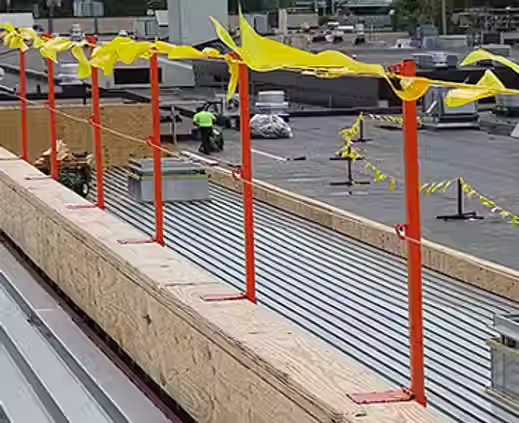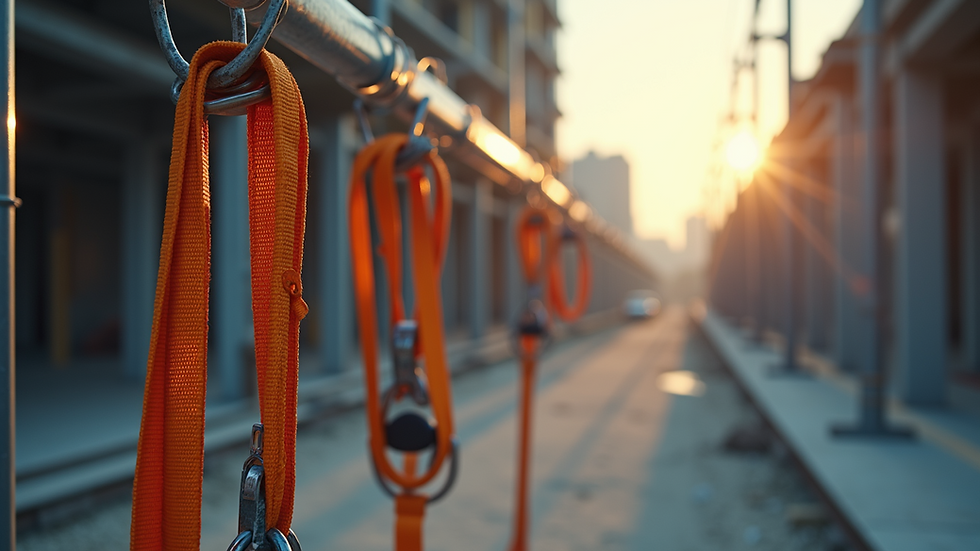Essential Tips for Ensuring Rooftop Safety
- zack3022
- May 1
- 3 min read
Updated: Jun 16
Rooftop safety is a critical aspect of both construction and maintenance work. Whether you're a roofing professional or a homeowner, it is essential to prioritize safety to prevent accidents and injuries. In this blog post, we'll explore essential tips for ensuring rooftop safety and discuss equipment and practices that can help keep you safe while working at heights.
Understanding Rooftop Safety
Rooftop safety is about more than just wearing a hard hat or using a harness. It encompasses a range of practices aimed at reducing risks associated with working on roofs. Understanding common hazards, implementing safety protocols, and utilizing appropriate safety equipment are crucial steps in protecting yourself and your team.
Many accidents occur due to falls, which are one of the leading causes of injuries in the construction industry. In fact, according to the Occupational Safety and Health Administration (OSHA), falls accounted for 33% of construction-related fatalities in recent years. By taking proactive measures, you can significantly reduce the risks associated with rooftop work.

Essential Practices for Rooftop Safety
Conduct a Safety Inspection: Before starting any work on a rooftop, conduct a thorough safety inspection. Check for loose tiles, debris, and unstable surfaces. Ensuring that the roof is in good condition can prevent accidents.
Use Proper Footwear: Good footwear is essential when working on a rooftop. Non-slip shoes or boots with good traction can help prevent slips and falls. Avoid smooth-soled shoes, as they can increase the risk of accidents.
Be Aware of Weather Conditions: Weather can significantly affect the safety of roofing work. Avoid working in high winds, rain, or snow. Wet surfaces can be slippery, so always check the weather forecast before heading to the roof.
Maintain a Clear Workspace: Keep your work area free of clutter and debris. This practice reduces the chance of tripping and falling. Ensure that tools and materials are stored safely when not in use.

What Equipment is Used for Roofing?
Using the right equipment is essential for ensuring rooftop safety. Here are some critical safety tools and equipment commonly used in the roofing industry:
Safety Harnesses: Harnesses are designed to secure workers when they are on the roof. They must be worn correctly and connected to a secure anchor point. This equipment can prevent serious injuries in case of a fall.
Guardrails: Installing guardrails around the perimeter of the roof is an effective way to provide protection. They offer a physical barrier that can stop workers from inadvertently falling off the edge.
Safety Nets: Safety nets can be installed below the work area to catch falling workers or materials. They provide an additional layer of safety and can be especially useful on larger roofing projects.
Ladders and Scaffolding: Ensure that ladders and scaffolding are stable and inspected before use. They should be properly set up and maintained to avoid accidents when accessing the roof.
Roof Safety Equipment: Using quality roof safety equipment can significantly reduce risks when working at heights. Choose equipment from reputable suppliers and ensure that it meets industry safety standards.

Implementing Safety Protocols
Creating a culture of safety is essential for any team working on rooftops. Here are some protocols to establish:
Training: Provide comprehensive safety training for all employees. Regular training helps ensure that everyone understands safety practices and equipment usage. Training should also be updated as new equipment or safety guidelines become available.
Buddy System: Encourage workers to use the buddy system when working on rooftops. Having a partner ensures that someone is always present to help in case of an emergency.
Emergency Procedures: Establish clear emergency procedures for falls or accidents. All team members should be familiar with these procedures and know how to handle emergencies effectively.
Regular Safety Meetings: Hold safety meetings regularly to discuss any concerns, updates, or lessons learned. These meetings keep safety at the forefront of everyone's mind and encourage open communication.
Final Thoughts on Rooftop Safety
Ensuring rooftop safety requires a combination of careful planning, the right equipment, and ongoing training. By implementing safety protocols and using appropriate tools, you can significantly reduce the risk of accidents and ensure the safety of everyone involved in roofing projects.
Remember, safety should never be compromised. Taking the time to prioritize safety measures can save lives and prevent serious injuries. By making rooftop safety a priority, you can carry out your roofing tasks effectively and confidently, knowing you have taken the necessary precautions.





Comments